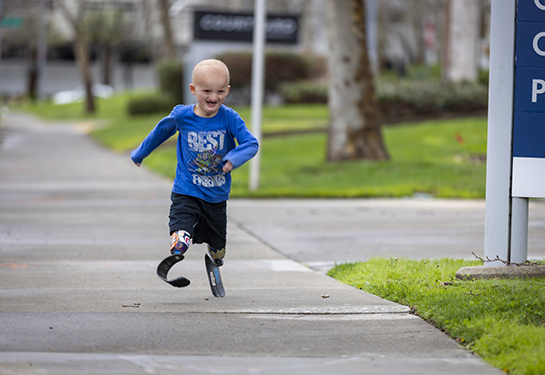Artificial intelligence could aid in evaluating parole decisions
Analysis of data from New York shows the parole release rate could be doubled without increasing the subsequent arrest rate
Over the last decade, there has been an effort by lawmakers to reduce incarceration in the United States without impacting public safety. This effort includes parole boards making risk-based parole decisions — releasing people assessed to be at low risk of committing a crime after being released.
To determine how effective the current system of risk-based parole is, researchers from the UC Davis Violence Prevention Research Program and the University of Missouri, Kansas City, used machine learning to analyze parole data from New York.
They suggest the New York State Parole Board could safely grant parole to more inmates. The study, “An Algorithmic Assessment of Parole Decisions,” was published in the Journal of Quantitative Criminology.
“We conservatively estimate the board could have more than doubled the release rate without increasing the total or violent felony arrest rate. And they could have achieved these gains while simultaneously eliminating racial disparities in release rates,” said Hannah S. Laqueur, an assistant professor in the Department of Emergency Medicine and lead author of the study.
According to the Bureau of Justice Statistics, by the end of 2021, the prison population for state, federal and military correctional facilities in the U.S. was 1,204,300.
Methods
The team used the machine-learning algorithm SuperLearner to predict any arrest, including a violent felony arrest, within three years of an individual being released from prison.
The algorithm looked at 91 variables to predict crime risk. These included age, minimum and maximum sentence, prison type, race, time in prison, previous arrests and other criteria.
The researchers trained their risk-prediction models on data from 4,168 individuals who were released on parole in New York between 2012 and 2015.
The authors implemented several tests to validate the algorithm on the full population of individuals up for parole. This included individuals who had hearings and were denied parole by the board but were later released at the end of their maximum sentence (6,784 individuals).
Our analyses suggest that many individuals are being denied parole and incarcerated past their minimum sentence despite being a low risk to public safety."—Hannah Laqueur
Results
The machine learning algorithm found the predicted risks for those denied parole and those released are very similar. This suggests that low-risk individuals may have remained incarcerated, while high-risk individuals were released.
The authors note they are not advocating replacing human decision-makers with algorithms to assess who should be released from prison. Instead, they see a role for algorithms to diagnose problems in the current parole system.
“This study demonstrates the utility of algorithms for evaluating criminal justice decision-making. Our analyses suggest that many individuals are being denied parole and incarcerated past their minimum sentence despite being a low risk to public safety. We hope that by providing data on predicted risks, we can aid reform efforts,” Laqueur said.
Ryan W. Copus, an associate professor of law at the University of Missouri, Kansas City, is a co-author of the study.
Resources
The UC Davis Violence Prevention Research Program (VPRP) is a multi-disciplinary program of research and policy development focused on the causes, consequences and prevention of violence. Studies assess firearm violence, the social conditions that underlie violence, and the connections between violence, substance abuse and mental illness. VPRP is home to the University of California Firearm Violence Research Center, which launched in 2017 with a $5 million appropriation from the state of California to conduct leading-edge research on firearm violence and its prevention. For more information, visit health.ucdavis.edu/vprp/.







